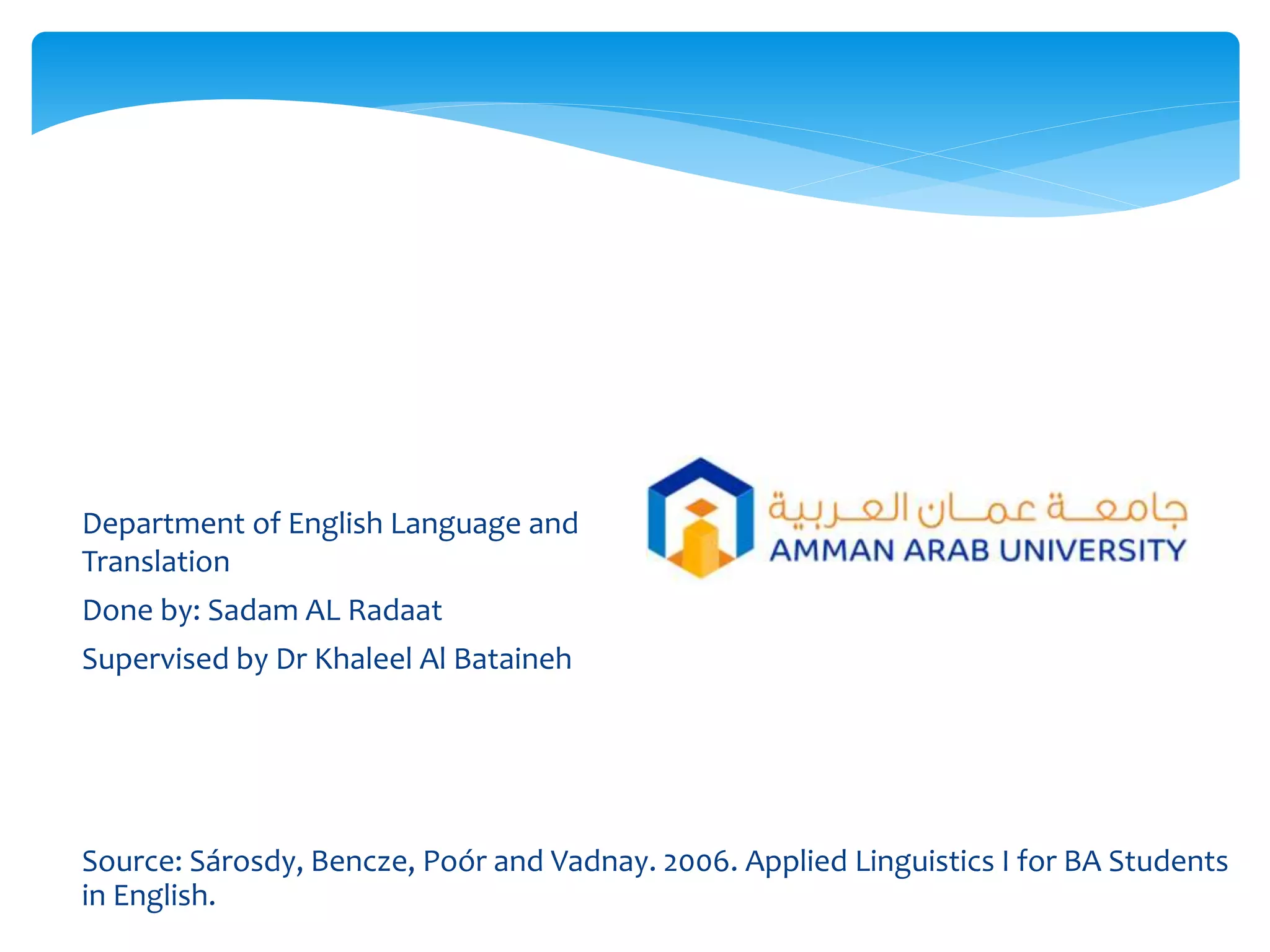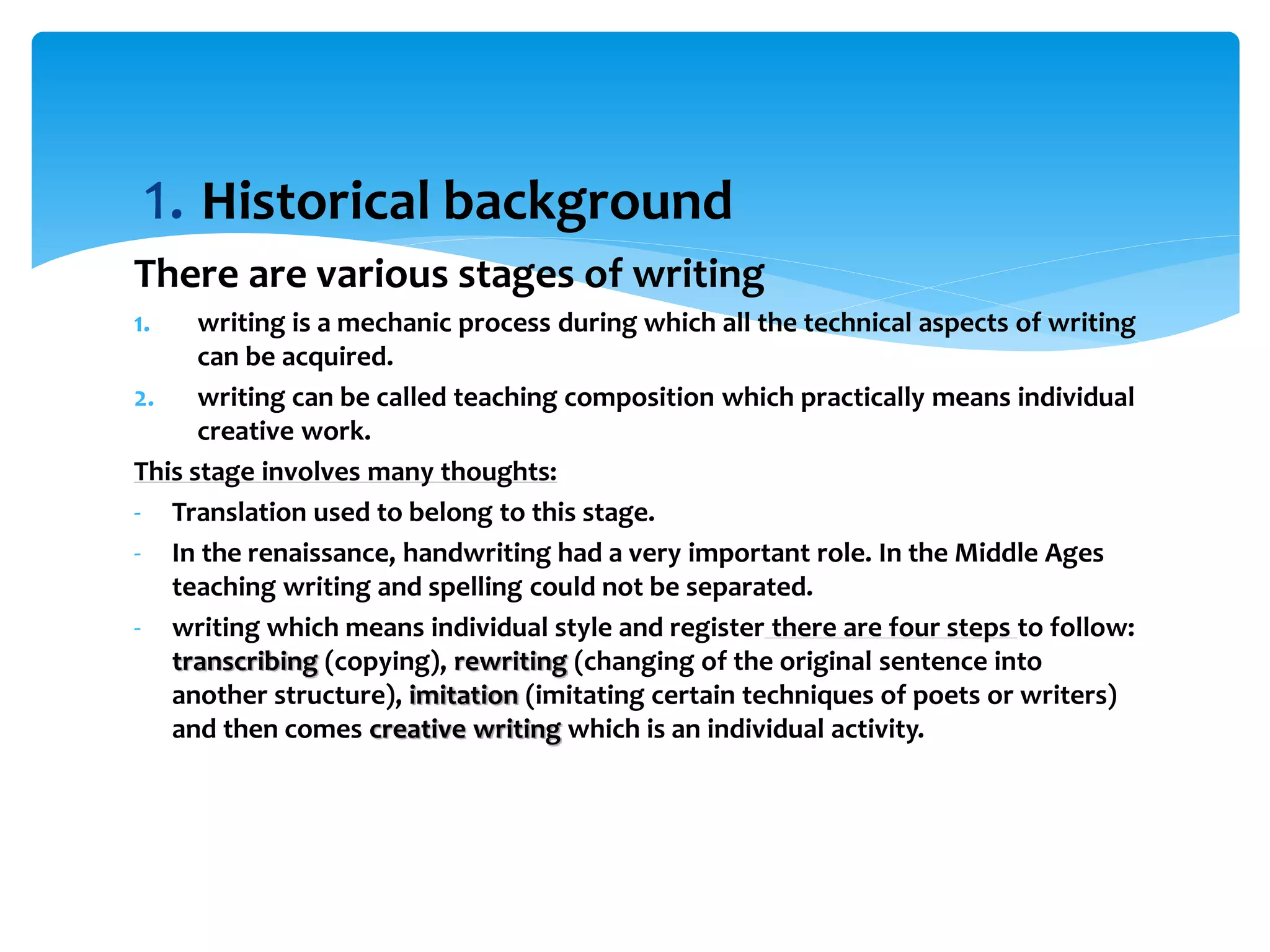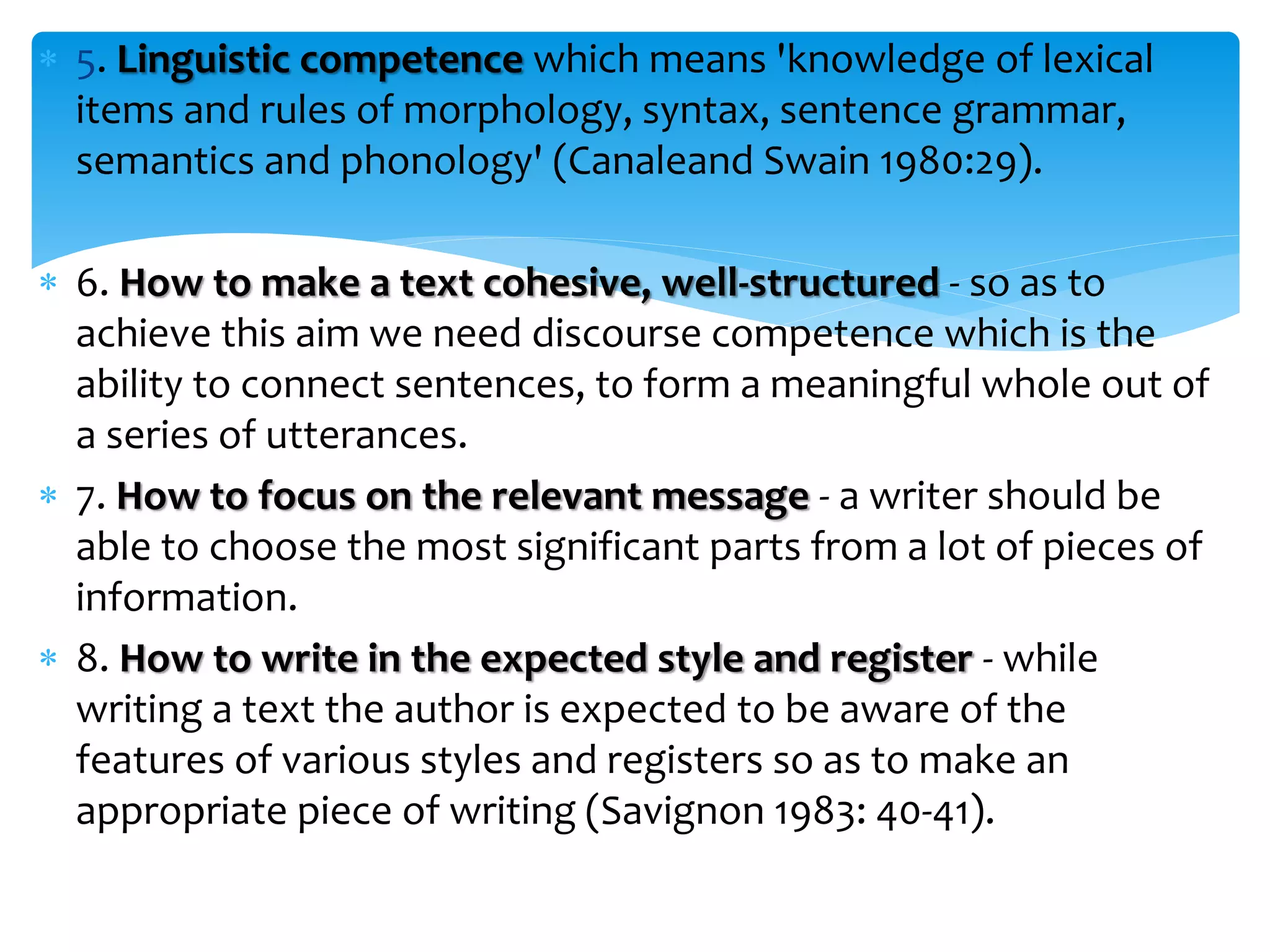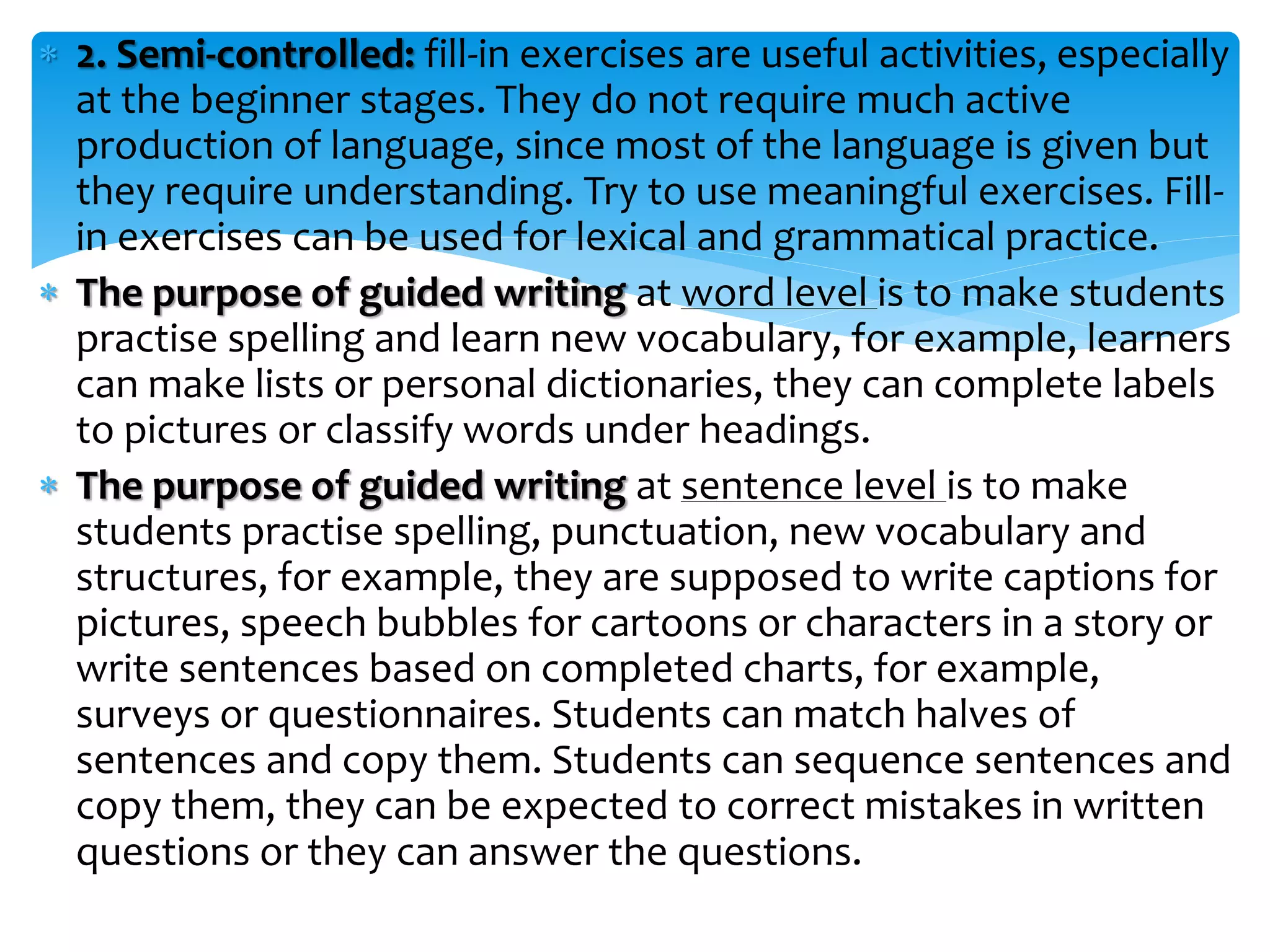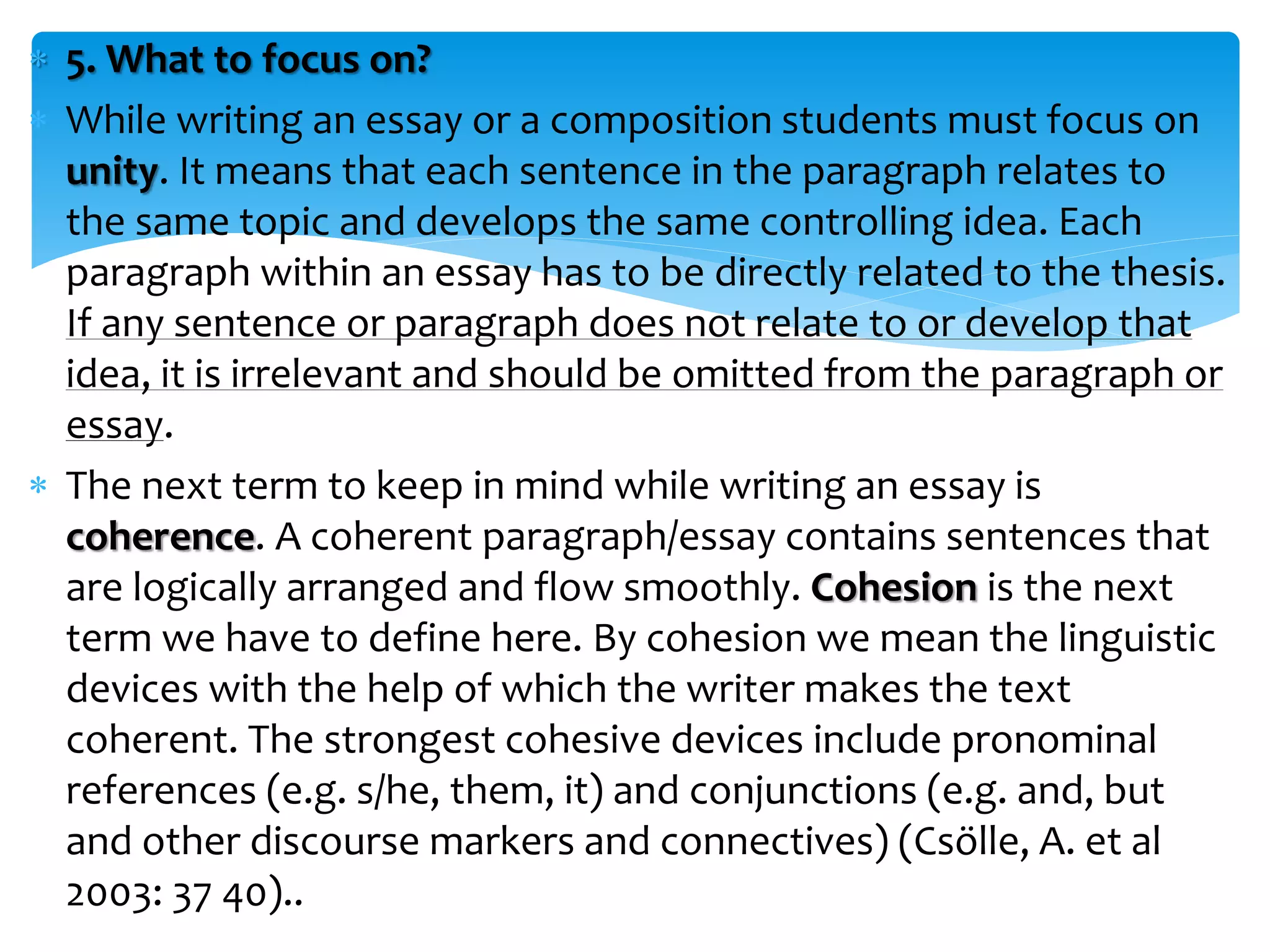The document discusses the evolution of writing instruction and the complexities of developing writing skills, emphasizing that writing is a more precise and formal form of communication compared to speech. It outlines various stages of writing development, sub-skills involved in writing, and effective teaching methodologies, including the importance of understanding cultural context in writing. Additionally, it highlights the significance of structure, coherence, and style in writing compositions and essays.
